Basic rules
Chess is a game where two players are divided into white and black, and their pieces are moved alternately.
The side who eventually lost opponent's King is the winner.
Initial arrangement of pieces
In chess, the position of the piece is represented by alphabet and number.
In the left-right direction, the left end is a, the right end is h, the vertical direction is 1 (bottom side) on the bottom side and 8 on the top side (black side) in the vertical direction.
For example, the upper left is a8 and the lower right is h1.
Actually arranging it will be as shown below.

Place the chess board so that the cell on the white right side of the white side becomes white, if it is white, d1, if it is black, put your queen in d8 (cell of the same color as yourself).
In chess, the white side becomes the first player.
How to distinguish and arrange King and Queen
The following two points will be explained.
1.「Where should the King and Queen be placed?」
2.「Which piece is the king and which piece is the queen?」
For 1, it's easy to remember to put the queen in the square with the same color as your piece out of the 2 squares left after placing the other pieces.
That is, put the white queen on d1 and the black queen on d8.
The problem is how to distinguish between King and Queen.
Distinguish by the difference in motif
Generally, the king piece is made with a crown and a cross, and the queen piece is made with a tiara as a motif.
The crown is often a hat-like crown, and the tiara is often a hair ornament-like ornament with sharp corners.
Another point is that the king pieces are often decorated with a cross, so it's quite easy to distinguish a piece with something like a cross just by remembering it as a king.
The cross and crown are considered to be Christian symbols, and historically the origin of chess is said to be Chaturanga in India, but due to the strong influence of Christianity in Europe where the current form of chess was made, it is now. It is thought that the design of the piece has taken root.
You may be worried if you don't know how to distinguish the following pieces, but you can distinguish them by paying attention to the motif of the cross and the shape of the crown.
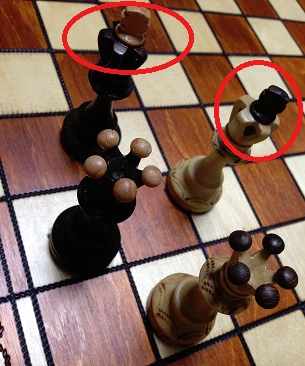
How the piece moves
In chess there are six pieces of Pawn, Rook, Night, Bishop, Queen, King, each characterized by movement.
Pawn
A pawn can basically move forward one cell. However, if there are pieces in front of the pawn, you can not move there.
Also, if there is an opponent's piece diagonally forward, you can move there and take the opponent's piece.
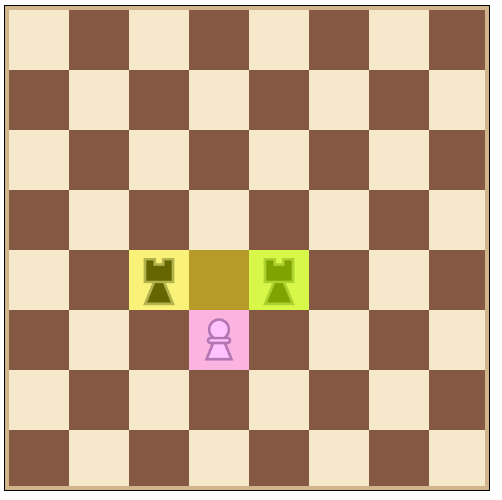
As a special movement, you can move forward 2 squares only when moving from the initial position. Only when there is no piece on the course.
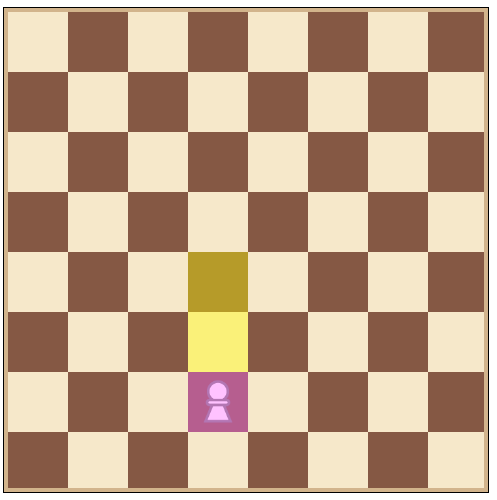
As a special movement, if your opponent 's pawn moves two steps and comes next to his pawn, you can move to the back of the other pawn and take the other pawn as far as the next turn.
This movement is called en passant .
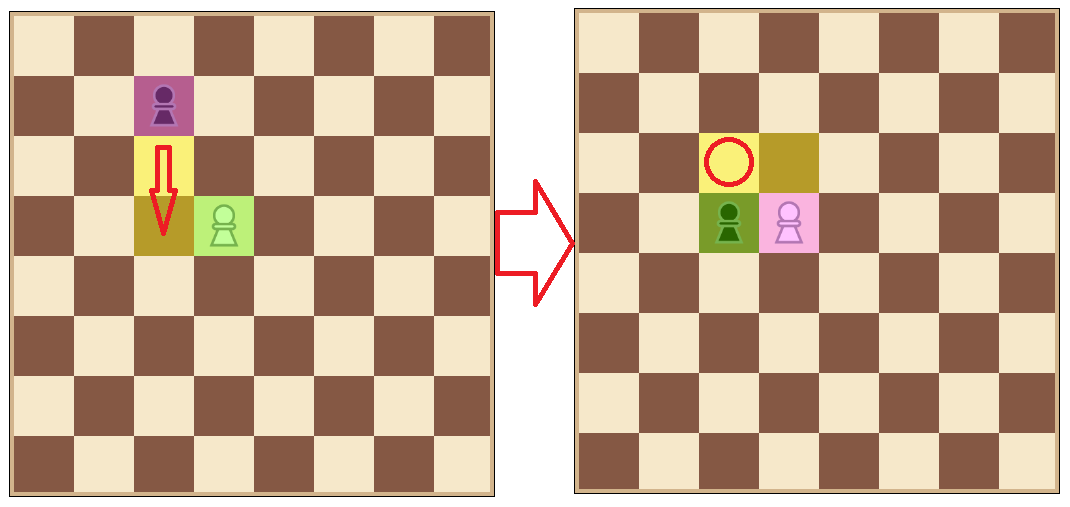
Also, when the pawn goes to the other end, you can become a favorite piece (promoted) of Queen, Luke, Bishop, Knight.
It is called promotion .
Rook
Rook can basically move to front, back, left, right, 4 directions until it is blocked by another piece. If there are opponent pieces on the move destination, you can take that piece.
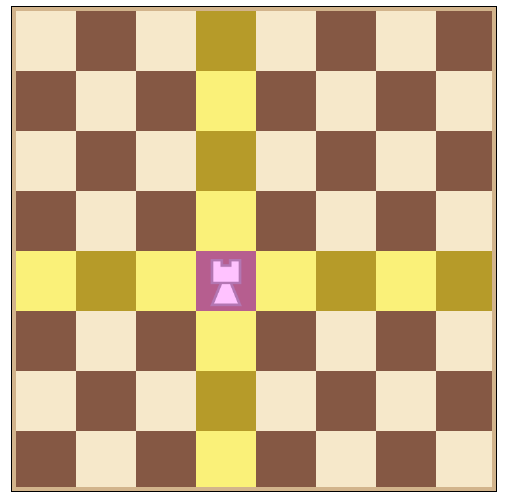
Bishop
Bishop can move to diagonal 4 direction until it is blocked by another piece. If there are opponent pieces on the move destination, you can take that piece.
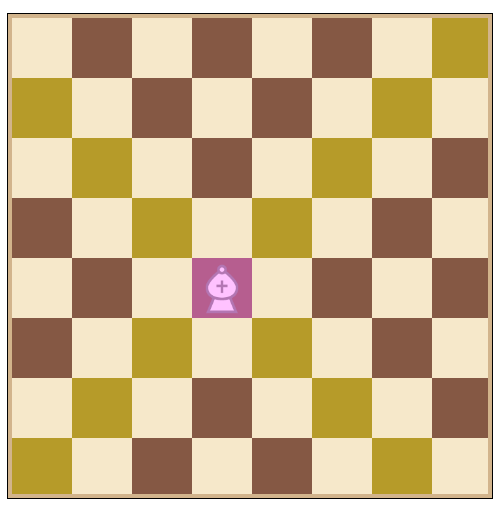
Knight
Knight can jump around 8 jumping over other pieces. If there are opponent pieces on the move destination, you can take that piece.

Although the spelling of the knight is "Knight", the initial letter "K" is the same as "King", so if you represent the name in alphabet, it is generally represented as "N"(k N ight).
Queen
You can move the queen in front, back, left, right and oblique 8 directions until it is blocked by another piece. If there are opponent pieces on the move destination, you can take that piece.

Queen is a very powerful piece, so in qualifying from a pawn queen is chosen in most cases.
King
The King can move one step only to the front, back, left, right and oblique 8 directions. If there are opponent pieces on the move destination, you can take that piece.

King is the most important piece that will be lost if taken. How to protect your King and attack King's opponent is an important point of the game.
It is called "check" to make it possible to take a King with your next piece unless the other moves.
The way that the "checked" King gets taken in any way is called "Checkmate", and the person who was "Checkmate" loses.
If King and Luke have not moved a single step and there is no piece in between and there is no dominance from the opponent's piece (situation where your piece will be taken if there is a piece there), Like you can move like King and Luke.
This is called "Castling", it is an important movement that allows you to move the King away from the center, which is likely to be a battlefield, and bring out a high attacking Luke in the center with a single hand.

Special rules
Repetition
If the same aspect appears three times, the turn can pick a draw. It is called Threefold repetition.
Stalemate
If the checked King can not escape the check, it will be a checkmate, but the unchecked king will be checked regardless of how it is moved The situation is called stale mate, It is not regarded as a mate, and in general it is a draw.